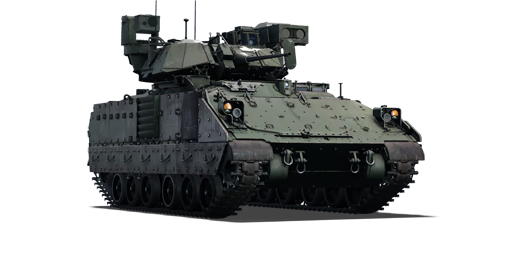Since its adoption, the Bradley Fighting Vehicle (BFV) series have underwent design upgrades to accommodate new features and experiences, leading to the A1 and A2 variants that were deployed during Operation Desert Storm. As the US Army moved towards the 21st century, there was an emphasis in improving the crew's ability to obtain and transmit information as part of the overall digitization of the military. This led to the A3 variant in the late 1990s that saw introduction of new communication equipment to other vehicles, a Commander's Independent Thermal View (CITV), new fire control system, and GPS navigation. The A3 upgrade began full-rate production in 2001, which included the M3 BFV as the M3A3 BFV.
The M3A3 Bradley, introduced in Update "Ixwa Strike", features significant capability improvements over the preceding M3 BFV. The M3A3 ability to engage targets have improved with a laser rangefinder, which complements well with the new 25 mm APFSDS ammunition available. The TOW missiles available for the M3A3 are also improved with the addition of the TOW-2A and TOW-2B modifications. The M3A3 variant differs mainly from the M3 Bradley by its laser rangefinder, its APFSDS belt for the 25 mm cannon, CITV, and more powerful TOW missiles with the TOW-2 penetrating almost double of the preceding version and the TOW-2B capable of top-attack. Though the armour is slightly better than the M3 with additional armour plates around the hull and sides, the M3A3 is still vulnerable to most enemy fire from autocannon calibre and above. Due to the new additions increasing the weight, the mobility is a little slower, though still respectable enough to get around. Despite these drawbacks, the vast firepower improvements ensure that the M3A3 remains competitive against its opponents.
















